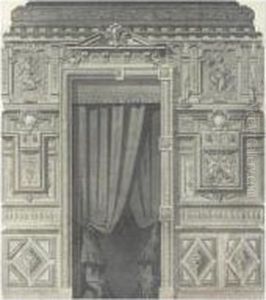Paul Sedille Paintings
Paul Sedille was a distinguished French architect and theorist, born in 1836 and passing away in 1900. Throughout his career, Sedille made significant contributions to the architectural landscape of France, particularly noted for his innovative designs and the application of new materials and techniques in construction. His work is often characterized by a blend of traditional French architectural styles with the emerging trends of his time, including elements of Art Nouveau.
Sedille's most notable project was the renovation of the Printemps department store in Paris, which not only showcased his architectural prowess but also his understanding of the importance of commercial architecture in urban spaces. This project, completed in the late 19th century, was revolutionary for its use of iron and glass, materials that allowed for larger, more open interior spaces and the flooding of natural light, characteristics that would become hallmarks of modern architecture.
Beyond his architectural practice, Sedille was also an influential theorist. He wrote extensively on the role of architecture in society and the importance of integrating artistic beauty with functional design. He was a proponent of the idea that architecture should contribute to the aesthetic and cultural enrichment of society, a belief that was reflected in his own work and teachings.
Throughout his career, Sedille's contributions to architecture were recognized by his peers and the French state. He was awarded several honors for his work, including being named a Chevalier of the Legion of Honor, one of France's highest honors for contributions to art and culture. Despite the recognition, Sedille remained committed to advancing architectural practice not just through his projects but also through his writings and lectures, influencing a generation of architects and designers.
Paul Sedille's legacy is seen in the buildings he designed and in the broader impact he had on the architectural profession. His vision for a blend of functionality and beauty in architecture, his innovative use of new materials, and his contributions to architectural theory mark him as a key figure in the transition from traditional to modern architectural practices in France and beyond.
